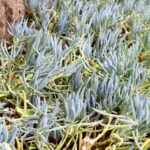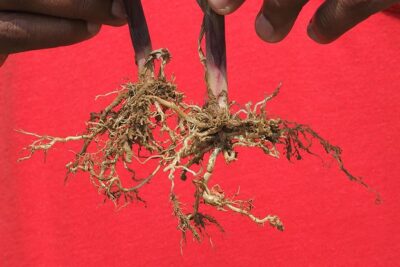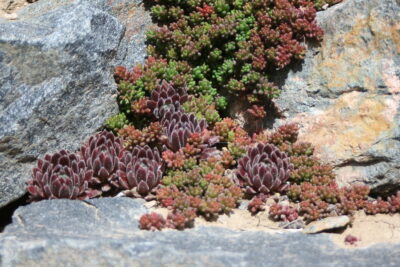
Can Succulent Cuttings Be Planted Directly in Soil?

Succulents have become increasingly popular in recent years, thanks to their unique shapes, vibrant colors, and low maintenance needs. These plants are known for their ability to store water in their leaves, stems, and roots, making them well-suited for arid environments. One common question that many succulent enthusiasts have is whether it is possible to plant succulent cuttings directly in soil.
We will explore the topic of planting succulent cuttings in soil. We will discuss the different methods of propagating succulents, including using leaf cuttings, stem cuttings, and offsets. We will also delve into the advantages and disadvantages of planting succulent cuttings directly in soil, as well as provide some tips for successful propagation. Whether you are a seasoned succulent lover or just starting out, this article will provide you with the information you need to propagate your succulents successfully.
- Yes, succulent cuttings can be planted directly in soil
- The cuttings should be allowed to callus before planting
- Make sure the soil is well-draining to prevent root rot
- Water the cuttings sparingly to avoid overwatering
- Choose a sunny spot for the cuttings to encourage healthy growth
- Avoid direct sunlight for the first few days to prevent burning
- Monitor the moisture level of the soil and adjust watering accordingly
- Be patient, as it may take some time for the cuttings to establish roots
- Once roots have formed, you can treat the succulent cuttings as mature plants
Yes, succulent cuttings can be planted directly in soil
When it comes to propagating succulents, many people wonder if they can simply plant the cuttings directly in soil. The good news is that yes, you can indeed plant succulent cuttings directly in soil, and it is actually a common and effective method of propagation.
One important thing to note is that not all succulents are suitable for propagation through cuttings. Some succulents, such as those with thick leaves or rosette-shaped growth patterns, are more likely to succeed when propagated through leaf cuttings. However, for succulents with stem-like growth patterns, planting cuttings directly in soil is a viable option.
Why plant succulent cuttings directly in soil?
Planting succulent cuttings directly in soil offers several benefits. Firstly, it eliminates the need for additional steps such as rooting the cuttings in water or using rooting hormone. This makes the process simpler and more convenient for many succulent enthusiasts.
Furthermore, planting cuttings directly in soil allows them to establish roots and start growing in their new environment right away. This can lead to faster and more successful root development compared to other propagation methods.
How to plant succulent cuttings directly in soil
Planting succulent cuttings directly in soil is a straightforward process. Here are some steps to follow:
 Propagation of Succulents: Cutting Techniques and Methods
Propagation of Succulents: Cutting Techniques and Methods- Prepare the soil: Use a well-draining succulent soil mix or create your own by combining potting soil, perlite, and coarse sand.
- Choose healthy cuttings: Select cuttings that are free from any signs of damage or disease. Make sure the cuttings have calloused over before planting.
- Make a hole: Use your finger or a pencil to create a small hole in the soil where you will plant the cutting.
- Plant the cutting: Gently place the cutting into the hole, ensuring that at least one node (where the leaves were attached) is covered by the soil.
- Water sparingly: After planting, give the cutting a light watering. Be careful not to overwater, as succulents are prone to rot if the soil remains too damp.
- Provide proper care: Place the newly planted cutting in a location with bright, indirect sunlight. Avoid direct sun exposure until the cutting has established roots.
By following these steps, you can successfully plant succulent cuttings directly in soil and watch them grow into healthy, mature plants over time.
So, if you have some succulent cuttings that you'd like to propagate, don't hesitate to give planting them directly in soil a try. It's a simple and effective method that can yield great results!
The cuttings should be allowed to callus before planting
When it comes to propagating succulents, one common question that arises is whether succulent cuttings can be planted directly in soil. The answer to this question is yes, but with a small caveat. Before planting the cuttings, it is important to allow them to callus.
What is callusing?
Callusing is the process of allowing the cut end of the succulent cutting to dry and form a protective layer. This layer helps to prevent the cut end from rotting when in contact with moisture, ensuring successful propagation.
How to callus succulent cuttings
Here is a step-by-step guide on how to callus succulent cuttings before planting them:
- Take healthy cuttings: Select healthy and well-established succulent plants for propagation. Use a clean and sharp pair of scissors or pruning shears to take cuttings from the parent plant.
- Allow the cut end to dry: After taking the cuttings, place them in a dry and shaded area. Let the cut end dry for about 1-3 days, depending on the thickness of the cutting. Thicker cuttings may require more time to callus.
- Avoid direct sunlight and excess moisture: During the callusing process, it is important to keep the cuttings away from direct sunlight and excessive moisture. This helps in preventing the cuttings from rotting.
- Check for callus formation: After the recommended drying period, check the cut end of the succulent cuttings. It should have formed a dry, cork-like layer. This indicates that the cuttings are ready for planting.
Planting the callused succulent cuttings
Once the succulent cuttings have callused, they are ready to be planted in soil. Here are a few tips to ensure successful planting:
 Succulent Root Growth: Unveiling Patterns and Depths
Succulent Root Growth: Unveiling Patterns and Depths- Choose well-draining soil: Succulents thrive in well-draining soil. Use a specialized succulent or cactus potting mix, or create your own by mixing regular potting soil with perlite or coarse sand.
- Prepare the planting hole: Make a small hole in the soil using your finger or a pencil. Ensure the hole is deep enough to accommodate the cut end of the succulent cutting.
- Plant the cutting: Gently insert the callused end of the cutting into the prepared hole, ensuring it is firmly in place. Avoid burying the entire cutting, as this can lead to rotting.
- Provide proper care: After planting, water the succulent cuttings sparingly. It is important to avoid overwatering, as succulents are prone to rot. Gradually increase watering as the cuttings establish roots and show signs of growth.
By following these steps, you can successfully callus succulent cuttings and plant them directly in soil. Remember to be patient, as it may take some time for the cuttings to root and establish themselves as new plants.
Make sure the soil is well-draining to prevent root rot
When it comes to propagating succulents, one common method is using cuttings. These cuttings are taken from the mother plant and can be replanted to create new succulent plants. However, one question that often arises is whether these cuttings can be planted directly in soil or if they require special treatment.
The answer to this question is that succulent cuttings can indeed be planted directly in soil. However, there are a few factors to consider to ensure their successful growth. One crucial factor is the type of soil you use. Succulents thrive in well-draining soil that allows excess water to flow out easily. This is because succulents are adapted to arid environments and have shallow root systems that can be prone to root rot if they sit in waterlogged soil for too long.
Choosing the right soil for succulent cuttings
When planting succulent cuttings directly in soil, it is essential to choose a well-draining soil mix. A popular choice is a cactus and succulent potting mix, which is specially formulated to provide the ideal conditions for succulent growth. This type of soil mix is usually composed of a combination of organic matter, such as peat or coconut coir, and mineral components like perlite or pumice.
The organic matter in the soil mix helps retain some moisture, while the mineral components ensure proper drainage. This combination allows the soil to hold enough water for the succulent cuttings to absorb while preventing water from pooling around their roots.
Planting succulent cuttings in soil
Once you have chosen the right soil mix, it's time to plant your succulent cuttings. You can start by preparing a well-draining pot or container filled with the soil mix. Make sure the pot has drainage holes at the bottom to allow excess water to escape.
Gently remove any leaves from the bottom of the succulent cutting, leaving a clean stem. This will prevent any buried leaves from rotting. Insert the stem of the cutting into the soil, ensuring it is planted deep enough to provide stability. You can also use a rooting hormone to promote root development, although it is not necessary for all succulent varieties.
 Growing Blue Bean Succulents: A Guide for Home Gardeners
Growing Blue Bean Succulents: A Guide for Home GardenersAfter planting the succulent cuttings, it's important to avoid watering them immediately. Allow the cuttings to callus over for a few days, which helps prevent rotting. Once the cuttings have calloused, you can lightly water the soil, ensuring it is evenly moist but not saturated.
Caring for succulent cuttings in soil
After planting, it's crucial to provide the right care for your succulent cuttings. Place the pot in a location with bright, indirect sunlight, as succulents require adequate light to grow and thrive. Avoid placing them in direct sunlight as it can scorch the delicate cuttings.
Water the succulent cuttings sparingly, allowing the soil to dry out between waterings. Overwatering can lead to root rot, so it's best to err on the side of underwatering rather than overwatering. As the succulent cuttings establish roots and grow, you can gradually increase the frequency of watering.
With proper care and the right soil conditions, succulent cuttings can successfully grow when planted directly in soil. This method allows for the easy propagation of succulents and is a great way to expand your succulent collection.
Water the cuttings sparingly to avoid overwatering
When it comes to propagating succulents, cuttings are a popular method for beginners and experienced gardeners alike. But the question often arises: can succulent cuttings be planted directly in soil? The answer is yes, but with a few important considerations.
Choosing the right type of soil
It's crucial to choose the right type of soil when planting succulent cuttings directly. Succulents thrive in well-draining soil that allows excess water to escape quickly, preventing the roots from sitting in moisture for too long. A sandy or gritty soil mix specifically formulated for succulents is ideal. Avoid using regular potting soil, as it tends to retain moisture and can lead to root rot.
 Planting Succulent Cuttings: Skip Rooting Process and See Results
Planting Succulent Cuttings: Skip Rooting Process and See ResultsPreparing the cuttings
Before planting the cuttings, it's essential to let them callous over for a few days. This process involves allowing the cut ends to dry out and form a protective layer, which helps prevent rotting. Place the cuttings in a dry and warm location, away from direct sunlight, to facilitate callousing.
Planting the cuttings
Once the cuttings have calloused, it's time to plant them directly in the soil. Make sure the soil is slightly moist but not wet. Create a small hole in the soil using your finger or a pencil and gently insert the cut end of the succulent cutting. Ensure that the cutting is buried deep enough to provide stability but not too deep that it may rot.
Caring for the cuttings
After planting the cuttings, water sparingly to avoid overwatering. Succulents are adapted to survive in arid conditions and can easily rot if exposed to excessive moisture. Allow the soil to dry out between waterings, and only water when the top inch of soil feels dry. Over time, the cuttings will develop roots and establish themselves in the soil.
Succulent cuttings can be planted directly in soil, but it's essential to choose the right soil, let the cuttings callous, and water sparingly. With proper care, your succulent cuttings will grow into healthy plants, adding beauty to your garden or indoor space.
Choose a sunny spot for the cuttings to encourage healthy growth
If you're wondering whether succulent cuttings can be planted directly in soil, the answer is yes! Succulents are known for their ability to propagate from cuttings, making them one of the easiest plants to grow. However, there are a few things to keep in mind to ensure successful growth.
Preparing the Soil
Before planting your succulent cuttings, it's important to prepare the soil properly. Succulents prefer well-draining soil to prevent root rot. You can either purchase a pre-made succulent soil mix or create your own by combining equal parts of potting soil, perlite, and coarse sand. This will provide the necessary drainage and aeration for the cuttings to thrive.
Choosing the Right Spot
Succulents love sunlight, so it's crucial to choose a sunny spot for your cuttings. Look for an area that receives at least six hours of direct sunlight per day. This will help the cuttings establish strong roots and promote healthy growth. If you're planting the cuttings indoors, place them near a south-facing window or provide artificial grow lights.
 Fast-track Succulent Propagation: Tips for Accelerated Growth
Fast-track Succulent Propagation: Tips for Accelerated GrowthPlanting the Cuttings
When planting succulent cuttings, it's important to handle them with care. Gently remove any leaves from the bottom inch of the stem to create a bare section that will be inserted into the soil. Allow the cuttings to dry for a day or two before planting to prevent rotting.
Using your fingers or a pencil, create a small hole in the soil and insert the cuttings, making sure the bare section is buried about 1 inch deep. Be careful not to bury the entire cutting, as this can lead to rot. Firmly press the soil around the base of the cutting to provide stability.
Caring for the Cuttings
After planting the cuttings, it's important to water them properly. Succulents have shallow root systems and are susceptible to overwatering. Water the cuttings sparingly, allowing the soil to dry out completely between waterings. This will prevent the roots from sitting in wet soil, which can lead to root rot.
It's also a good idea to mist the cuttings occasionally to increase humidity, especially if you live in a dry climate. However, be cautious not to overdo it, as high humidity can also cause rot.
Once the cuttings have rooted and established themselves, you can gradually decrease the frequency of watering and transition them to a regular succulent care routine.
By following these steps and providing the right conditions, you can successfully plant succulent cuttings directly in soil and watch them grow into beautiful, thriving plants.
Avoid direct sunlight for the first few days to prevent burning
 Propagating Split Rocks Succulents: Can They Be Divided for Growth?
Propagating Split Rocks Succulents: Can They Be Divided for Growth?Can Succulent Cuttings Be Planted Directly in Soil?
Succulents are a popular choice for both indoor and outdoor gardens due to their unique and stunning appearance. One common question that many succulent enthusiasts have is whether succulent cuttings can be planted directly in soil. In this article, we will explore the answer to this question and provide you with some helpful tips on how to properly plant succulent cuttings.
When planting succulent cuttings directly in soil, it is important to provide them with the right conditions to ensure successful root development. One crucial step is to avoid exposing the cuttings to direct sunlight for the first few days after planting. Direct sunlight can cause the cuttings to burn and suffer damage. Instead, place the newly planted cuttings in a shaded area or provide them with filtered light to allow them to acclimate to their new environment.
Once the succulent cuttings have had time to adjust, gradually introduce them to more sunlight by slowly increasing their exposure over a period of a few weeks. This gradual process will allow the cuttings to develop a stronger tolerance to sunlight and prevent them from getting sunburned.
Tip: It is important to note that different succulent species have varying sunlight requirements. Research the specific needs of your succulent cuttings to ensure they receive the appropriate amount of light.
Monitor the moisture level of the soil and adjust watering accordingly
When it comes to succulent cuttings, one common question that often arises is whether they can be planted directly in soil. The answer to this question is yes, but with some important considerations.
 Step-by-Step Guide: Growing a Beautiful Rose Succulent
Step-by-Step Guide: Growing a Beautiful Rose Succulent1. Choose the right soil: Succulents thrive in well-draining soil that allows excess water to flow out easily. Opt for a specialized succulent or cactus soil mix, or create your own by combining regular potting soil with perlite or pumice to improve drainage.
2. Prepare the cuttings: Before planting the succulent cuttings, it is crucial to allow them to callous over. This process involves letting the cut ends of the stems dry out and form a protective layer. Place the cuttings in a dry and well-ventilated area for a few days until calloused.
3. Insert the cuttings: Once the cuttings have calloused, it's time to plant them in the soil. Make a small hole in the soil using your finger or a pencil and gently insert the cut end of the stem into the hole. Ensure that the bottom leaves are above the soil level to prevent rotting.
4. Monitor the moisture level: Succulents are adapted to survive in arid conditions, so overwatering can be detrimental to their health. Monitor the moisture level of the soil and adjust watering accordingly. Allow the soil to dry out completely between waterings to prevent root rot.
5. Provide adequate sunlight: Succulents require bright, indirect sunlight to thrive. Place the planted cuttings in an area that receives at least 6-8 hours of sunlight per day. If outdoor conditions are not favorable, consider using grow lights to provide the necessary light intensity.
6. Be patient: Growing succulents from cuttings takes time and patience. It may take several weeks or even months for the cuttings to establish roots and grow into mature plants. Avoid the temptation to overwater or disturb the cuttings during this period.
By following these guidelines, you can successfully plant succulent cuttings directly in soil and watch them grow into beautiful, thriving plants. Remember to provide the right soil, proper watering, adequate sunlight, and patience for the best results.
 Easy Guide to Propagating Jelly Bean Succulents at Home
Easy Guide to Propagating Jelly Bean Succulents at HomeBe patient, as it may take some time for the cuttings to establish roots
One common question that succulent enthusiasts often ask is whether succulent cuttings can be planted directly in soil. The answer to this question is both simple and complex. While it is possible to plant succulent cuttings directly in soil, there are several factors to consider before doing so.
1. The type of succulent: Some succulents are more likely to root successfully when planted directly in soil, while others may have a higher chance of success when propagated in water or a well-draining medium. It's important to research the specific requirements of the succulent you are working with before deciding on the propagation method.
2. The condition of the cutting: If the cutting has already formed calluses or has started to develop roots, it may have a better chance of survival when planted directly in soil. However, if the cutting is fresh and hasn't had time to callus, it is recommended to let it dry and develop calluses before planting.
3. The soil composition: Succulents thrive in well-draining soil that allows excess water to escape easily. When planting succulent cuttings directly in soil, it is crucial to ensure that the soil is well-draining and does not retain water. Adding perlite or coarse sand to the soil can help improve drainage.
4. The environmental conditions: Succulent cuttings planted directly in soil require specific environmental conditions to root successfully. They need bright but indirect sunlight, moderate temperatures, and low humidity. Providing the right conditions will increase the chances of successful rooting.
5. Patience and care: Planting succulent cuttings directly in soil requires patience and careful maintenance. It may take several weeks or even months for the cuttings to establish roots and start growing. During this time, it is important to provide adequate water, but not overwater, as succulents are prone to root rot.
 Discover the Succulents with Shallow Root Systems for Easy Care
Discover the Succulents with Shallow Root Systems for Easy CareTo summarize, while succulent cuttings can be planted directly in soil, it is essential to consider the type of succulent, the condition of the cutting, the soil composition, the environmental conditions, and the need for patience and care. By taking these factors into account, you can increase the chances of successful rooting and growth for your succulent cuttings.
Once roots have formed, you can treat the succulent cuttings as mature plants
Once roots have formed, you can treat the succulent cuttings as mature plants. This means that you can now plant them directly in soil without any worries. Succulent cuttings are known for their ability to grow roots and thrive in various conditions, making them an excellent choice for beginners and experienced gardeners alike.
Before planting the succulent cuttings directly in soil, there are a few things to consider. First, make sure that the soil is well-draining to prevent root rot. Succulents prefer soil that allows water to flow through easily, preventing excess moisture from causing damage to the roots.
You can either purchase a pre-made succulent soil mix or create your own by combining equal parts of peat moss, perlite, and coarse sand. This combination provides the perfect balance of water retention and drainage for succulents.
Next, choose a suitable container for planting the succulent cuttings. It should have drainage holes at the bottom to allow excess water to escape. You can use a regular pot or even repurpose a container such as a teacup or a glass jar, as long as it provides enough space for the roots to grow.
Before planting, it's important to let the cuttings callous over. This means allowing the cut ends to dry and form a protective layer. You can achieve this by placing the cuttings on a tray or paper towel and leaving them to air dry for a few days. Once calloused, the cuttings are ready for planting.
 Can You Propagate Succulents by Cutting and Replanting the Cuttings?
Can You Propagate Succulents by Cutting and Replanting the Cuttings?When planting the succulent cuttings, gently press them into the soil, making sure that the calloused end is facing downwards. It's important not to bury the entire cutting, as this can lead to rot. Instead, leave a small portion of the stem above the soil line.
After planting, water the cuttings lightly. Be careful not to overwater, as succulents are sensitive to excess moisture. It's best to water from the bottom by placing the container in a shallow tray filled with water. Allow the soil to soak up the water and then remove the container from the tray.
Place the planted succulent cuttings in a location that receives bright, indirect sunlight. Avoid placing them in direct sunlight, as this can cause sunburn. Over time, the cuttings will develop strong roots and start growing into beautiful, mature succulent plants.
Succulent cuttings can be planted directly in soil once roots have formed. By following the proper planting techniques and providing the right conditions, you can watch your cuttings grow into thriving succulent plants.
Frequently Asked Questions
1. Can Succulent Cuttings Be Planted Directly in Soil?
Yes, succulent cuttings can be planted directly in soil. It is best to let the cut end callus over for a few days before planting to prevent rotting.
If you want to read more articles similar to Can Succulent Cuttings Be Planted Directly in Soil?, you can visit the Propagation category.






You Must Read